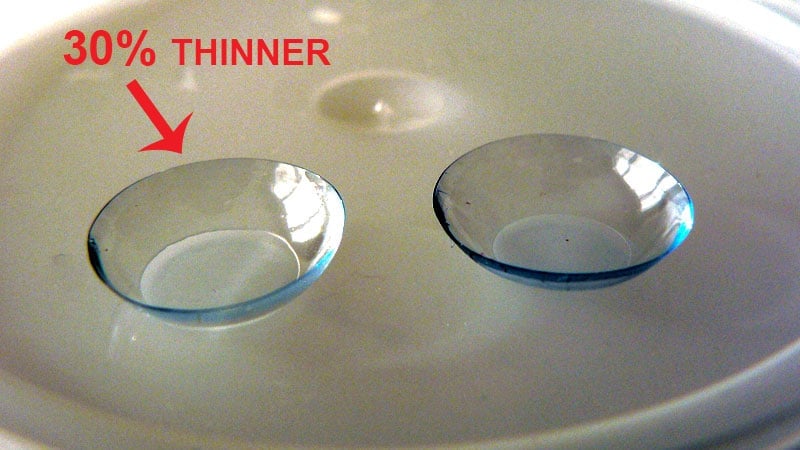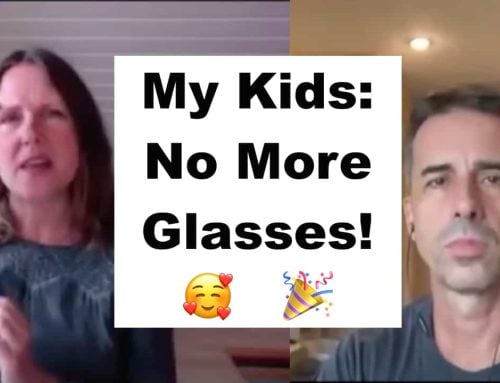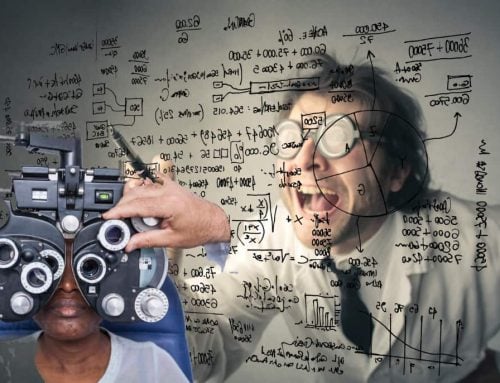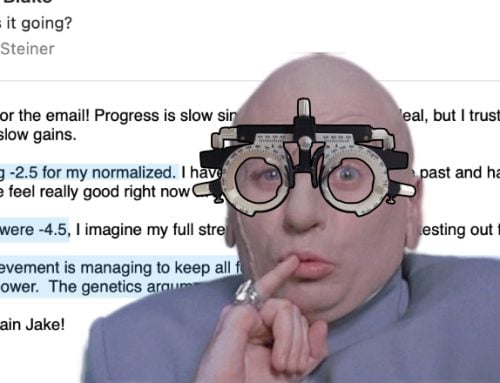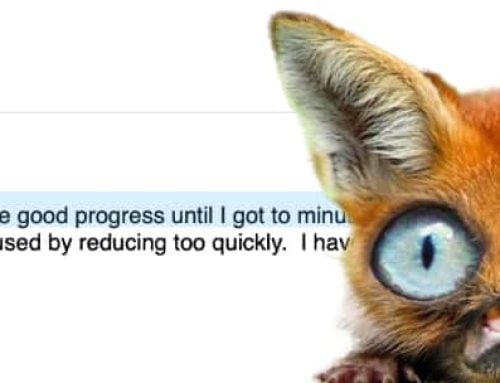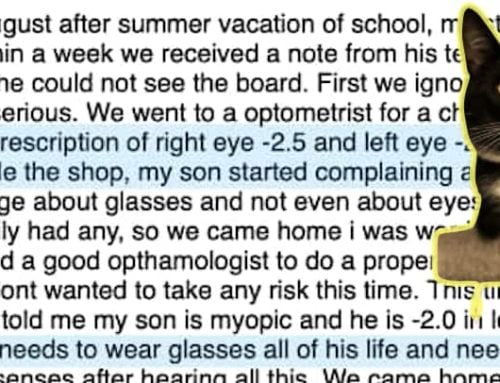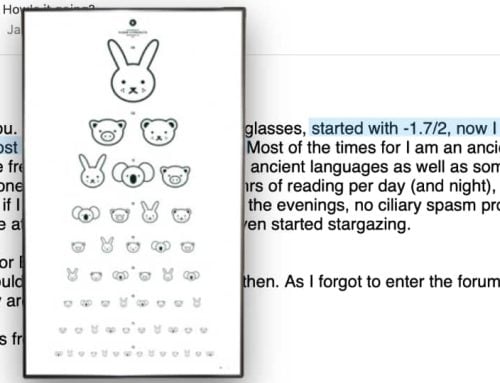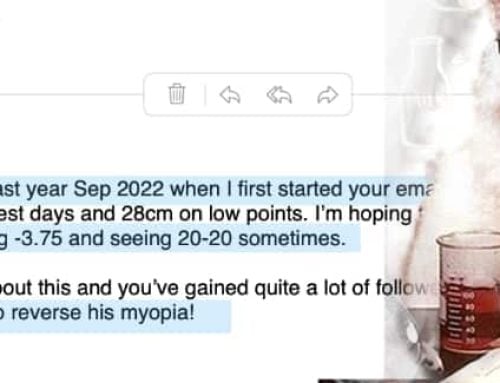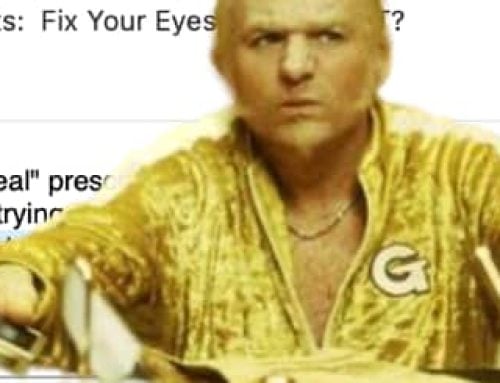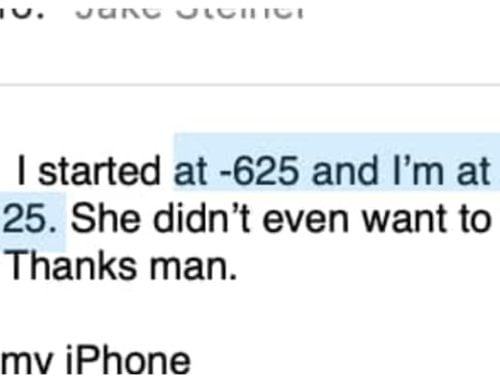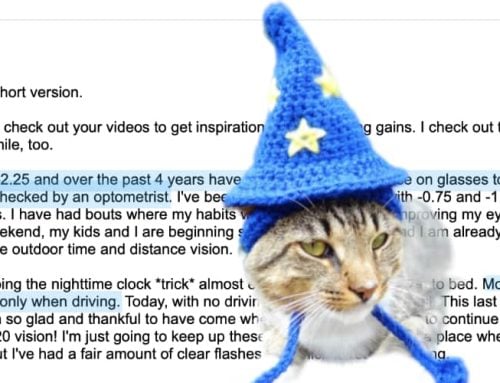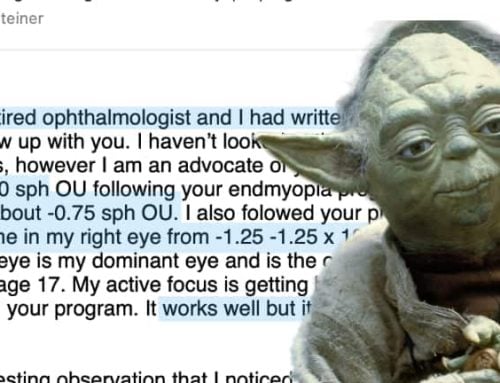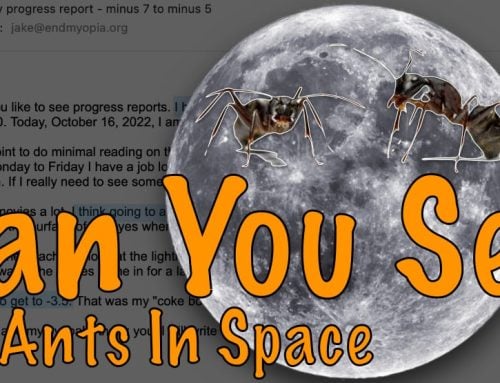Two important eye health topics today.
I) Contact Lenses May Damage Corneal Tissue
This is a serious side effect of extended contact lens wear, and science is well aware. And yet it’s probably not something your dispensing doctor ever told you.
You can do several things to protect your eyesight, even if you wear contact lenses.
We’ll look at that, as part of:
II) Shannon Got Thinner Contact Lenses (and you can too)
You notice that I often advocate against extended contact lens wear.
I am sometimes vague about my recommendations. Like for example, don’t wear contacts more than necessary. I grumble that, and then don’t explain further.
Let’s try to address that today. This particular grumble is rooted in my research of countless clinical studies of over the years, and finding things that lead me to be less than amenable to suggesting that you stick things in your eyes.
Why, for example?
Your cornea will permanently lose tissue from contact lens wear.
That’s not great.
There are several studies on this topic, most notably perhaps in 2002. Dennis Brown, OD and Ellen Penno, MD studied over 600 (!) eyes, using patients looking for refractive surgery (ie. LASIK).
They found a clinically significant reduction in corneal thickness in full time contact lens wearers.
Take a look:
(published in the Journal of Cataract & Refractive Surgery, 2002)
I get quite a bit of e-mail, asking me for links to studies related to these subjects.
(Here’s the link to the corneal study.)
There are always studies, for all of the topics we discuss here. You can’t always easily find them, unless you go to medical literature search tools (scholar.google.com is an excellent starting point).
These findings don’t get a whole lot of funding or exposure, after they start to look like they’ll be less than flattering to lens manufacturing industry ad dollars. You will usually have to come to a specialized outlet (like this site), not dependent on editorial controls.
Back to contact lens use:
You don’t want to lose any of your corneal tissue. It’s absolutely integral to your eyesight.
The cornea is the transparent front part of the eye that covers the iris, pupil, and anterior chamber. The cornea, with the anterior chamber and lens, refracts light, with the cornea accounting for approximately two-thirds of the eye’s total optical power.
It is made up of no less than five distinct layers, and is one of the single most sensitive tissues in the body.
(Curious to learn more about the cornea? This Wiki article is a good starting point)
And do wear contact lenses, where appropriate.
If it makes sense, skip them for close-up (you lose a lot of oxygen supply with the lower blink rate during close-up). Skip them when they don’t specifically enhance your experience. And start looking at them as a rehabilitative aid, to be used in moderation, and as part of a plan of ongoing diopter reduction.
Also, realize:
Lower prescription contacts may be thinner, create less tissue damage, and pass more oxygen.
Let’s take a look at contact lens damage control, via the forum (brilliant, amazing, fascinating insights, stories, ideas, and reports from students, just about every day – thanks for your contributions!).
Today, Shannon shares a revelation with her new, thinner contact lenses.
Check out her story, going from -8.00 contacts to -5.75 (in 5 months!):
I am closely approaching month 5 of rehab starting prescription (GLASSES -9.0 1.0 | 8.75 1.25) and I have finally managed to move myself from the weirdly high myopia zone to the high myopia zone. I am so stoked! I was formerly wearing a dismal -8.5 contacts, so I have somehow departed from the “you’re so blind that let’s just put you up 0.5 diopters because your vision has been destroyed and you can’t see anything anyways” to the “we measure in 0.25 diopters so that you can actually have a somewhat accurate contacts prescription”. YAY YAY YAY YAY!
This was my big goal for the end of summer, and I’m here. I can’t believe it! I was really nervous since I had already gone down 3 0.5 reductions, but I’m actually not doing too badly at all. I actually can see the 20/20 line after two weeks in -5.75 contacts (converts to -6.0 glasses). When I first started, I was pulling 20/50 and 20/40, and now I’m pulling 20/30 20/20 with effort, but still! I think park of the progress is that my eyes are more equal now. My big goal is to be able to see my eyes in he mirror well enough to put on makeup with no glasses. My eyes were getting so bad before that I had to have my eye so close to the mirror that I couldn’t put on mascara. Eeeeeek! Definitely a low point for me.
This brings me to my biggest observation with the contacts. The -6 to -8 contacts feel completely different. These new -5.75 are much much thinner and less drying. When I try to make them into a bowl shape, they hold the shape less well and fold in half because they are so thin. I have been wearing them for three days all day, and my eyes don’t even feel dry (it is summer though). I would think that the lenses in -2 to -4 are even thinner and have even better vision as the number contacts is the same as glasses and no calculation needs to be made i.e add 0.25 or 0.5. Anyone else have similar experience? Or has anyone moved from a -4 zone to the -3.75 zone? I dream of what it is like down there. I am still finding that I need glasses that are about a diopter higher than the contacts though unfortunately. Anyways – I think if someone can manage to get into a thinner contact ‘zone’, they might have less dry eyes, which is wonderful for contact lens lovers.
Contact lenses are a great distance vision option, for high myopes.
But even more pretty great is starting to see the high prescription contacts as a stepping stone to lower myopia contact lenses. Contacts can be an eyesight recovery tool, rather than a permanent attachment on your eyeball.
Cheers,
-Jake

